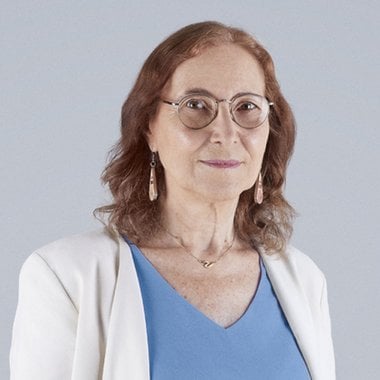Alicia Dickenstein: Mathematics at the Service of Innovation

Mathematics - Laureate for Latin America and the Caribbean
Professor Alicia Dickenstein is operating at the forefront of mathematical innovation by leveraging algebraic geometry in the realm of molecular biology to understand the precise structures and behaviors of molecules and cells, even at a microscopic scale. As an outstanding mathematician operating at the frontier between pure and applied mathematics, she has also forged important links to physics and chemistry. Unraveling these complex systems enables researchers to predict how concentrations of chemical elements within cells evolve over time. This could help determine the appropriate concentration of medicine to provide to a patient, for example.
Her beginnings in MathematicsProfessor Dickenstein had always enjoyed maths at school, and recalls the joy of looking at cells through a microscope. Her career has seen her make great strides since then, working directly on the biological applications of mathematics.
A groundbreaking scientific career
A Professor at the University of Buenos Aires, Argentina, Professor Dickenstein was elected a member of the Academy of Exact, Physical and Natural Science of Argentina in 2018 and the National Academy of Sciences of Argentina in 2020, and has previously held the post of Vice President of the International Mathematical Union, only the second woman to have done so. Among her many awards and recognitions, she won the TWAS1 prize for Mathematics in 2015. She has also written and coordinated the production of numerous mathematical books, particularly for children.
In particular, Professor Dickenstein specializes in identifying computational mathematical models to help biologists advance their research – models that can be applied even without knowing all the parameters that define what takes place within a cell. She has detected an underlying mathematical structure in many popular signaling pathways, which she named MESSI systems, as they describe Modifications of type Enzyme-Substrate or Swap with Intermediates. This allowed her and her collaborators to prove theorems about the behavior of diverse biological mechanisms.
“I believe that science is a collective endeavor, and I am happy to have created bridges between different branches of mathematics and real-life scientific applications, helping researchers in diverse fields to make further discoveries. My dream is that science will enable us to prevent painful diseases and help to create a world where nature is no longer degraded and polluted.”
The place of women in the scientific field
In a scientific field with a particularly low representation of female researchers, Professor Dickenstein is driven by a longstanding conviction that women can do anything, a belief that was both nurtured by her school and her family. She remains keenly aware of the obstacles for women scientists in gaining equal research and career opportunities, and the subtle, yet persistent forms of gender discrimination that continue throughout society.
For Professor Dickenstein, the benefits of gender equality in science are clear:
“If we make the natural assumption that talent is equally distributed, we are losing many talents if there is no balance between genders.”
Among the promising signs of change, she notes the recent recognition of women at the highest echelons of science – through the Abel Prize in Mathematics in 2019 and the Nobel Prizes in Physics and Chemistry in 2020. Yet, there is still a way to go to achieve gender equality in science.